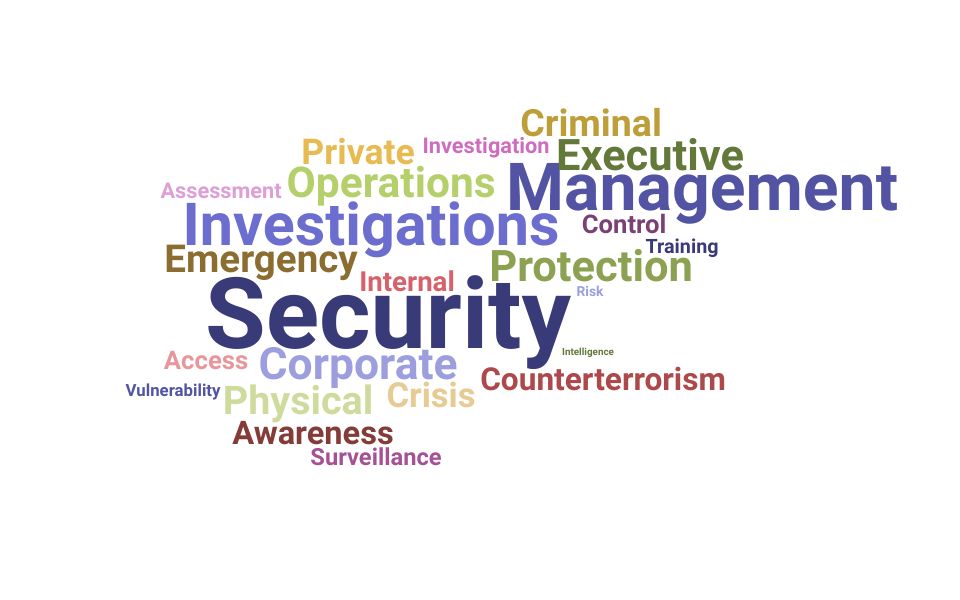Letting loose the Power of Corporate Security: A Comprehensive Guide
From Cybersecurity to Physical Measures: Enhancing Company Security in a Changing Globe
By integrating the strengths of both cybersecurity and physical safety and security, companies can create a detailed defense technique that deals with the diverse variety of dangers they encounter. In this conversation, we will certainly check out the transforming threat landscape, the demand to integrate cybersecurity and physical security, the application of multi-factor verification actions, the significance of worker understanding and training, and the adaptation of safety and security steps for remote workforces. By taking a look at these vital areas, we will acquire important insights into just how organizations can enhance their corporate safety and security in an ever-changing globe.
Comprehending the Altering Hazard Landscape
The advancing nature of the modern world demands a detailed understanding of the transforming hazard landscape for effective business safety. It is critical for organizations to remain informed and adapt their safety and security measures to deal with these progressing risks.
One secret facet of recognizing the changing hazard landscape is recognizing the various kinds of threats that organizations encounter. Cybercriminals are frequently establishing brand-new methods to make use of susceptabilities in computer systems and networks. These hazards can vary from malware and ransomware assaults to phishing rip-offs and social design strategies. Furthermore, physical risks such as theft, vandalism, and business reconnaissance continue to be widespread issues for companies.
Tracking and examining the hazard landscape is vital in order to identify potential threats and susceptabilities. This includes staying upgraded on the current cybersecurity fads, assessing hazard intelligence records, and performing normal risk analyses. By recognizing the transforming threat landscape, companies can proactively implement suitable safety actions to minimize threats and protect their assets, online reputation, and stakeholders.
Integrating Cybersecurity and Physical Protection
Integrating cybersecurity and physical safety is crucial for extensive company protection in today's digital and interconnected landscape. As organizations increasingly depend on innovation and interconnected systems, the limits between physical and cyber threats are becoming blurred. To effectively secure against these threats, an alternative approach that combines both cybersecurity and physical protection procedures is necessary.
Cybersecurity concentrates on securing electronic possessions, such as systems, data, and networks, from unapproved gain access to, interruption, and theft. Physical security, on the various other hand, incorporates actions to secure physical assets, individuals, and facilities from dangers and susceptabilities. By incorporating these two domains, companies can deal with vulnerabilities and threats from both physical and digital angles, consequently enhancing their total protection posture.
The integration of these 2 techniques permits a much more detailed understanding of safety dangers and allows a unified reaction to incidents. For instance, physical accessibility controls can be improved by integrating them with cybersecurity protocols, such as two-factor verification or biometric recognition. Cybersecurity steps can be matched by physical protection procedures, such as security video cameras, alarm systems, and safe and secure gain access to points.

Applying Multi-Factor Authentication Actions
As companies significantly focus on thorough security actions, one effective technique is the execution of multi-factor verification actions. Multi-factor authentication (MFA) is a safety approach that calls for individuals to provide numerous kinds of recognition to access a system or application. This method adds an extra layer of defense by combining something the individual understands, such as a password, with something they have, like a safety and security or a finger print token.
By executing MFA, organizations can substantially improve their safety and security stance - corporate security. Traditional password-based authentication has its limitations, as passwords can be conveniently compromised or failed to remember. MFA reduces these dangers by including an added verification variable, making it more tough for unapproved individuals to gain access to sensitive information
There are several types of multi-factor authentication methods readily available, consisting of biometric authentication, SMS-based confirmation codes, and hardware tokens. Organizations require to examine their details demands and select the most appropriate MFA option for their requirements.
Nonetheless, the execution of MFA ought to be thoroughly planned and performed. It is critical to strike an equilibrium between safety and use to stop customer disappointment and resistance. Organizations needs to likewise consider prospective compatibility concerns and give appropriate training and support to make sure a smooth shift.
Enhancing Worker Awareness and Training
To find this strengthen business safety, look here companies need to focus on enhancing employee recognition and training. Lots of safety and security violations happen due to human mistake or absence of recognition.
Efficient worker awareness and training programs must cover a vast array of subjects, consisting of data defense, phishing strikes, social design, password hygiene, and physical safety and security steps. These programs ought to be tailored to the specific demands and responsibilities of different staff member roles within the company. Regular training simulations, workshops, and sessions can assist workers create the required abilities and knowledge to respond and identify to safety and security threats properly.
In addition, organizations ought to motivate a society of protection recognition and provide ongoing updates and suggestions to maintain workers notified regarding the current hazards and reduction methods. This can be done through interior interaction channels, such as newsletters, intranet portals, and email campaigns. By cultivating a security-conscious workforce, companies can substantially lower the possibility of safety and security cases and shield their important properties from unapproved access or compromise.

Adapting Protection Actions for Remote Workforce
Adapting company safety and security steps to accommodate a remote labor force is vital in ensuring the defense of sensitive info and properties (corporate security). With the enhancing trend of remote work, companies should apply ideal protection steps to reduce the dangers connected with this brand-new method of functioning
One critical facet of adapting security steps for remote job is establishing safe communication channels. Encrypted messaging systems and virtual personal networks (VPNs) can aid safeguard sensitive info and prevent unapproved access. Additionally, organizations must enforce the use of solid passwords and multi-factor verification to enhance the security of remote gain access to.
An additional vital factor to consider is the implementation of safe and secure remote accessibility options. This involves offering employees with protected access to company sources and data through digital desktop infrastructure (VDI), remote desktop methods (RDP), or cloud-based solutions. These modern technologies make sure that sensitive information remains secured while allowing staff members to execute their functions properly.

Lastly, comprehensive security awareness training is important for remote workers. Training sessions should cover best techniques for firmly accessing and handling sensitive info, recognizing and reporting phishing this hyperlink efforts, and keeping the general cybersecurity hygiene.
Final Thought
In conclusion, as the hazard landscape continues to progress, it is important for organizations to strengthen their security gauges both in the cyber and physical domain names. Incorporating cybersecurity and physical safety, carrying out multi-factor authentication actions, and boosting staff member recognition and training are necessary actions towards accomplishing robust company safety and security.
In this conversation, we will certainly discover the transforming hazard landscape, the demand to integrate cybersecurity and physical protection, the execution of multi-factor verification steps, the importance of employee awareness and training, and the adjustment of security steps for remote labor forces. Cybersecurity actions can be enhanced by physical safety and security measures, such as monitoring cams, alarms, and safe accessibility factors.
As companies progressively focus on thorough security measures, one reliable technique is the execution of multi-factor authentication steps.In conclusion, as the danger landscape proceeds to evolve, it is critical for companies to reinforce their safety determines both in the cyber and physical domain names. Incorporating cybersecurity and physical security, implementing multi-factor verification procedures, and enhancing staff member recognition and training are essential actions towards accomplishing durable company security.